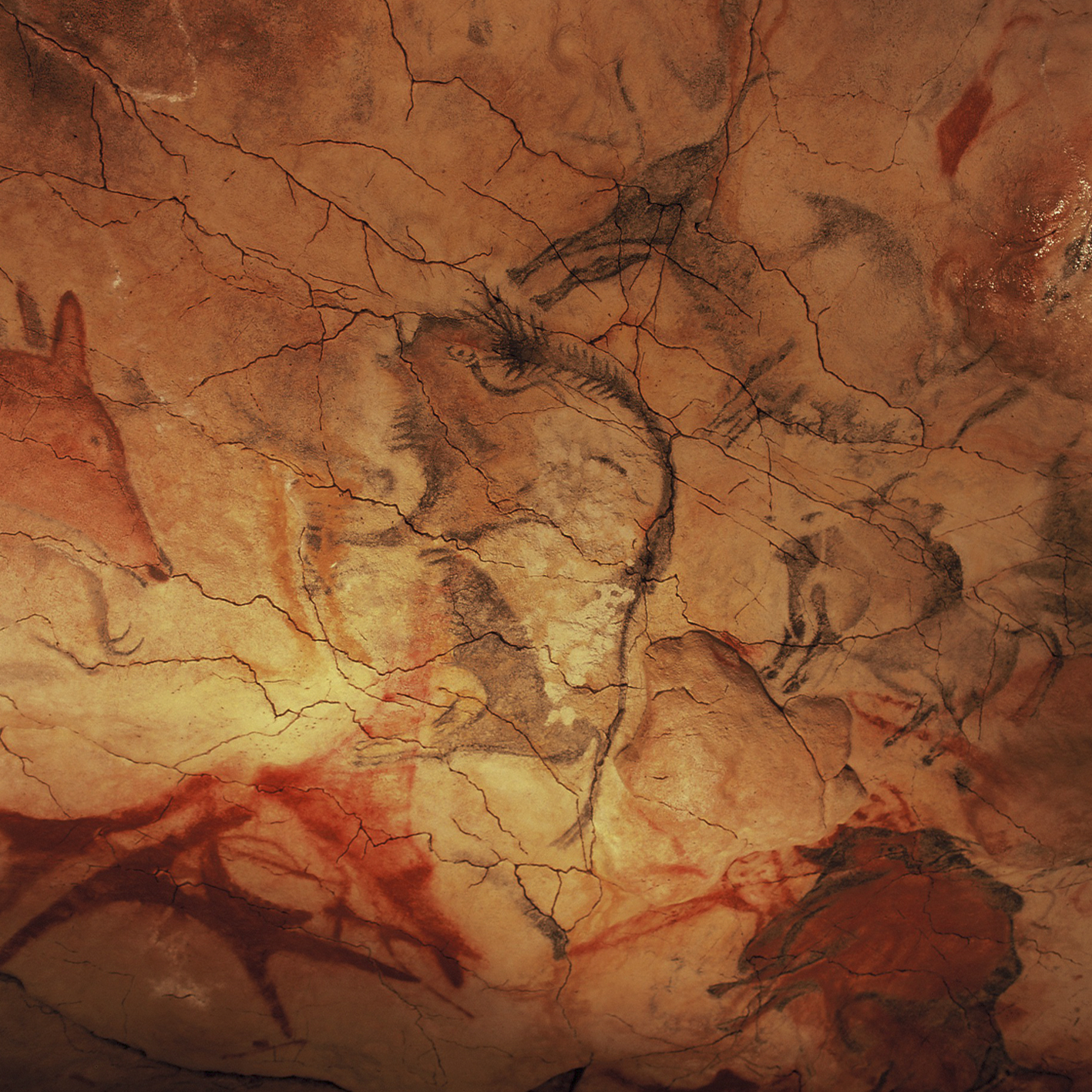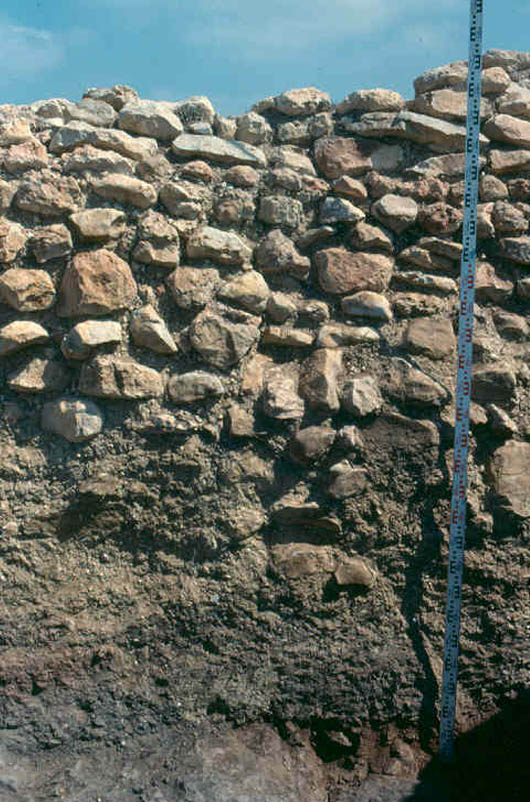|
Les Raboses
The archaeological site of Les Raboses is located on the mountain with the same name in the municipality of Albalat dels Tarongers (Baix Palancia). This deposit is framed chronologically in the Bronze Age. History The site was found by the prospecting works carried out in the 1940s, by Andrés Monzo Nogues. The materials found in these surveys are being investigated and preserved by the '' Servicio de Investigación Prehistórica'' (SIP) de Valencia. The site was prospected and excavated again in 1987-89 by Eva Ripollés. Location and environment The site of Les Raboses is inside the Camp de Morvedre region. Its location, on a hilltop is characteristic of the Bronze Age culture. Its environment is hilly and also frames the Palancia river basin, which has served as a communication hub between the interior and the coast since ancient times. It is delimited by the Garbí on the west and the mountains of Sant Esperit on the east. Their lithologies are formed by limestone ma ... [...More Info...] [...Related Items...] OR: [Wikipedia] [Google] [Baidu] |
Albalat Dels Tarongers
Albalat dels Tarongers is a Municipalities of Spain, municipality in the Comarques of the Valencian Community, ''comarca'' of Camp de Morvedre in the Valencia (autonomous community), Valencian Community, Spain. Notable people * Ángel Casero, former cyclist References Municipalities in the Province of Valencia Camp de Morvedre Bien de Interés Cultural landmarks in the Province of Valencia {{valencia-geo-stub ... [...More Info...] [...Related Items...] OR: [Wikipedia] [Google] [Baidu] |
Quercus Faginea
''Quercus faginea'', the Portuguese oak, is a species of oak native to the western Mediterranean region in the Iberian Peninsula. Similar trees in the Atlas Mountains of northwest Africa are usually included in this species, or sometimes treated as a distinct species, ''Quercus tlemcenensis''. It occurs in mountains from sea level to above sea level, and flourishes in a variety of soils and climates. Out of all the oak forests in the Iberian Peninsula, the southern populations of Portuguese oak were found to have the highest diversity and endemism of spider species. Description ''Q. faginea'' is a medium-sized deciduous or semi-evergreen tree growing to tall, with a trunk up to in diameter, with grey-brown bark. The tree can live as long as 600 years. The leaves are long and 1.2–4 cm broad (rarely to 15 cm long and 5 cm broad), glossy dark green to gray-green above, and variably felted grey-white below; the margins have five to 12 pairs of irre ... [...More Info...] [...Related Items...] OR: [Wikipedia] [Google] [Baidu] |
Archaeological Sites In The Valencian Community
Archaeology or archeology is the scientific study of human activity through the recovery and analysis of material culture. The archaeological record consists of artifacts, architecture, biofacts or ecofacts, sites, and cultural landscapes. Archaeology can be considered both a social science and a branch of the humanities. It is usually considered an independent academic discipline, but may also be classified as part of anthropology (in North America – the four-field approach), history or geography. Archaeologists study human prehistory and history, from the development of the first stone tools at Lomekwi in East Africa 3.3 million years ago up until recent decades. Archaeology is distinct from palaeontology, which is the study of fossil remains. Archaeology is particularly important for learning about prehistoric societies, for which, by definition, there are no written records. Prehistory includes over 99% of the human past, from the Paleolithic until the advent o ... [...More Info...] [...Related Items...] OR: [Wikipedia] [Google] [Baidu] |
Bronze Age Spain
The prehistory of the Iberian Peninsula begins with the arrival of the first hominins 1.2 million years ago and ends with the Punic Wars, when the territory enters the domains of written history. In this long period, some of its most significant landmarks were to host the last stand of the Neanderthal people, to develop some of the most impressive Paleolithic art, alongside Southern France, to be the seat of the earliest civilizations of Western Europe and finally to become a most desired colonial objective due to its strategic position and its many mineral riches. Lower and Middle Paleolithic The first inhabitation by humans of the Iberian Peninsula dates from the Paleolithic. Early hominin remains have been discovered at a number of sites on the peninsula. Significant evidence of an extended occupation of Iberia by Neanderthal man has also been discovered. Homo sapiens first entered Iberia towards the end of the Paleolithic. For a time Neanderthals and modern humans coexiste ... [...More Info...] [...Related Items...] OR: [Wikipedia] [Google] [Baidu] |
Mola De Agres
Mola can refer to: Places * La Mola, Formentera, Balearic Islands, Spain * Lake Mola, a lake near Ilirska Bistrica, Inner Carniola region, Slovenia * Mola di Bari, or simply Mola, a city in Apulia, Southern Italy Mountains *Mola de Colldejou, a mountain chain in Catalonia, Spain *Mola dels Quatre Termes, a mountain in Catalonia, Spain *Mola del Guerxet, a mountain in Catalonia, Spain *Mola Gran, a mountain in the Valencian Community, Spain *Mola de Llaberia, a mountain in Catalonia, Spain Museums * Museum of the Living Artist (MoLA), a new exhibition of works by San Diego artists * Museum of London Archaeology (MOLA), an archaeological organisation and charity (formerly part of the Museum of London) * Museum of Living Art (MOLA), an exhibition at Fort Worth Zoo, USA People * Mola Ram (1743–1833), Indian painter * Mola Sylla (born 1956), Senegalese musician * Carlos Loret de Mola (born 1976), Mexican journalist * Carlos Loret de Mola Mediz (1921–1986), Mexican politician and ... [...More Info...] [...Related Items...] OR: [Wikipedia] [Google] [Baidu] |
Alzira, Valencia
Alzira ( es, Alcira) is a city and municipality of 45.088 inhabitants (62,094 floating population) in Valencia, eastern Spain. It is the capital of the '' comarca'' of Ribera Alta in the province of Valencia. The city is the heart of the second largest urban agglomeration in the province, with a population of over 100,000. Geographic situation Alzira is located in the province of Valencia, on the left bank of the Júcar river, and on the Valencia–Alicante railway. Alzira's climate is typically Mediterranean: warm with no extremes of temperature either in summer or winter. Rainfall is scarce and irregular. Torrential rains usually follow periods of relative drought. The town is situated on the shores of the Júcar river and contains the Murta and Casella valleys. Alzira's borough extends over 111 square kilometres. History Alzira was founded by the Muslim Moors under the name Jazirat Shukr ( ar, جزيرة شَقْر) which later became known as Xúquer Island. ... [...More Info...] [...Related Items...] OR: [Wikipedia] [Google] [Baidu] |
Muntanya Assolada
Muntanya Assolada is a Bronze Age settlement located on the right bank of the Xúquer river, in Spain, built on the top of a spur of the Corbera mountain range, dominating the river plain from a height of above sea level. It is located in the municipality of Alzira, Valencia, Spain. Excavation campaigns began in 1978, under the direction of Bernat Martí Oliver, and continued until 1996, and work on the site was resumed in 2004. From the 1990s Rosa Enguix Alemany and María Jesús de Pedro joined the direction of the site. At present the excavated area covers and includes different structures, like a central street and rectangular departments on both sides; a wall of two meters wide that preserves almost three meters of height (); occupancy soils and abandonment episodes; livestock stabling; and terracing of the slopes to expand its surface. At present the site is property of the Alzira City council, and the new beginning of the excavations by the Servei d'Investigació Prehistò ... [...More Info...] [...Related Items...] OR: [Wikipedia] [Google] [Baidu] |
Paterna
Paterna is a city and a municipality in the province of Valencia in the Valencian Community, Spain. It is located northeast of the comarca of '' L'Horta de Valencia'', northwest of the inland suburbs of Valencia, and on the left bank of the river Turia. Its population in 2014 was 67,156 inhabitants, being the eleventh city by population in the Valencian Community. Geography The town is characterized by a dry Mediterranean climate, with an average annual rainfall around and temperatures ranging from minimum in January to maximum in August, reaching every summer peaks above . History The first signs of human settlement in Paterna back to the Neolithic and Bronze Age, and relics have been found in settlements of The Vallesa and Despeñaperros, in an area of small hills near the river Turia, which allowed the water supply. The Iberians also left their imprint in The Vallesa and Despeñaperros, where there have been found remains of a defensive wall and the walls of small ... [...More Info...] [...Related Items...] OR: [Wikipedia] [Google] [Baidu] |
Villar Del Arzobispo
Villar del Arzobispo (Valencian: El Villar) is a municipality in the ''comarca'' of Los Serranos in the Valencian Community The Valencian Community ( ca-valencia, Comunitat Valenciana, es, Comunidad Valenciana) is an Autonomous communities of Spain, autonomous community of Spain. It is the fourth most populous Spanish Autonomous communities of Spain, autonomous comm ..., Spain. References Municipalities in the Province of Valencia Los Serranos {{valencia-geo-stub ... [...More Info...] [...Related Items...] OR: [Wikipedia] [Google] [Baidu] |
Puntal De Cambra
Puntal (foaled 1996) is a National Hunt racehorse who won the Betfred Gold Cup in 2004 and ran in five consecutive Grand Nationals from 2003 to 2007 with limited success. He was formally trained in France before moving to Martin Pipe in 2002. After Martin retired his son David Pipe trained him. In the 2006 Grand National Puntal overcame a 484-day absence to finish 6th, his best finish in the historic race to date. He finished in 8th place in the 2007 Grand National, where his high odds of 100/1 fell to 50/1 just before the race started. After a poor run at the 2009 Cheltenham Festival The Cheltenham Festival is a horse racing-based meeting in the National Hunt racing calendar in the United Kingdom, with race prize money second only to the Grand National. The four-day festival takes place annually in March at Cheltenham Ra ..., his owner decided to retire Puntal from racing. External links pedigreequery.comracingpost.co.uk 1996 racehorse births National Hunt racehorses ... [...More Info...] [...Related Items...] OR: [Wikipedia] [Google] [Baidu] |
Quercus Suber
''Quercus suber'', commonly called the cork oak, is a medium-sized, evergreen oak tree in the section ''Quercus'' sect. ''Cerris''. It is the primary source of cork for wine bottle stoppers and other uses, such as cork flooring and as the cores of cricket balls. It is native to southwest Europe and northwest Africa. In the Mediterranean basin the tree is an ancient species with fossil remnants dating back to the Tertiary period. It endures drought and makes little demand on the soil quality and is regarded as a defence against desertification. Cork oak forests are home to a multitude of animal and plant species. Since cork is increasingly being displaced by other materials as a bottle cap, these forests are at risk as part of the cultural landscape and animal species such as the Iberian lynx are threatened with extinction. Description General appearance and bark The cork oak grows as an evergreen tree, reaching an average height of or in rare cases up to 25 m and a ... [...More Info...] [...Related Items...] OR: [Wikipedia] [Google] [Baidu] |

.jpg)


